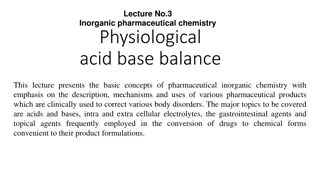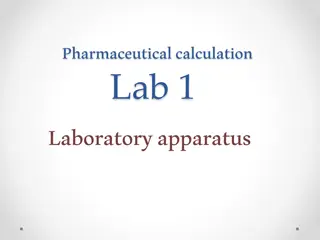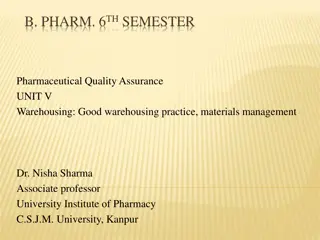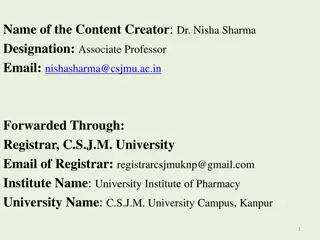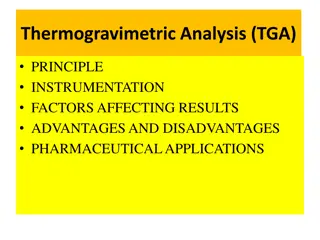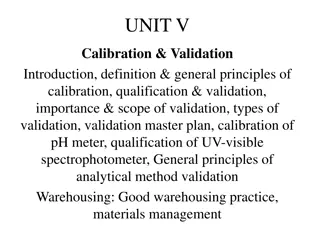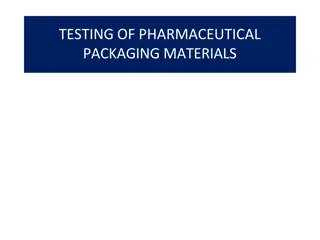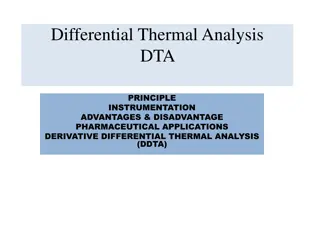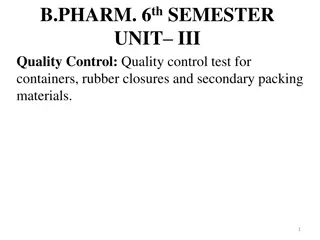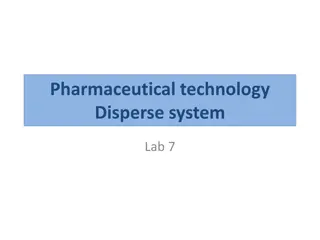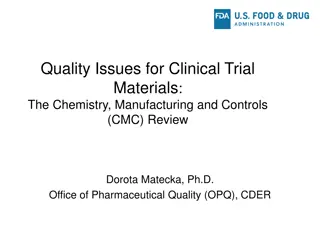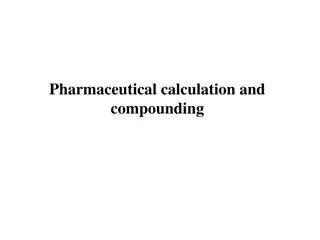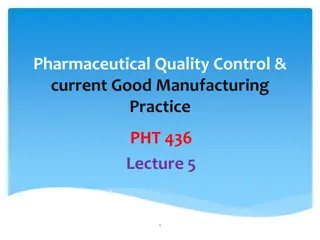Quality by Design Paradigm in Pharmaceutical Development
Introducing Quality by Design (QbD), a systematic approach emphasizing predefined objectives, product and process understanding, and quality risk management. Key characteristics, regulatory tools, and its application in drug development are highlighted.
Download Presentation

Please find below an Image/Link to download the presentation.
The content on the website is provided AS IS for your information and personal use only. It may not be sold, licensed, or shared on other websites without obtaining consent from the author.If you encounter any issues during the download, it is possible that the publisher has removed the file from their server.
You are allowed to download the files provided on this website for personal or commercial use, subject to the condition that they are used lawfully. All files are the property of their respective owners.
The content on the website is provided AS IS for your information and personal use only. It may not be sold, licensed, or shared on other websites without obtaining consent from the author.
E N D
Presentation Transcript
Quality by Design (QbD) Presented By: Dr. Garima Joshi Assistant Professor Department of Pharmacy Mohanlal Sukhadia University 44 me Congr s International SFSTP 6-7 Juin 2012
A new Quality paradigm ICH discussions in July 2003 (Brussels) agreed a consensus vision: Develop a harmonized pharmaceutical quality system applicable across the life emphasizing an integrated approach to risk management and science cycle of the product 44 me Congr s International SFSTP 6-7 Juin 2012
What is Quality by Design? Quality by Design (QbD) is: A systematic approach to development that begins with predefined objectives and emphasizes product and process understanding and Process control, based on sound science and Quality Risk Managment
Florence Philippoz / Richard 4 Dennett Key characteristics of QbD Atool for focused & efficient drug development Is a dynamic and systematic process Relies on the concept that Quality can be built in as a continuum Is applicable to Drug Product and Drug Substance development (chemicals / biologics) Is applicable to analytical methods implemented partially or totally Can be Can be used at any time in the life cycle of the Drug Is encouraged by Regulators (EMA & FDA) 44 me Congr s International SFSTP 6-7 Juin 2012
5 QbD: Regulatory tools Date Guideline Reference Scope Aug. 2009 Nov. 2005 June 2008 Jan 2011 ICH Q8(R2) ICH Q9 ICH Q10 FDA Pharmaceutical Development Quality Risk Managment Pharmaceutical Quality System Process validation. General principles and practices Guide for implementation Dec 2011 ICH Q8/Q9/Q10 (R2) March 2012 EMA/CHMP/QWP/ 811210 EMA/CHMP/CVMP/QW P/70278 (draft) ICH Q11 Real Time Release Testing (formerly GL on parametric release) Process validation March 2012 May 2012 Development & Manufacture of Drug Substances
6 QbD: Regulatory tools (2/3) EMA/FDA Pilot project started inApril 2011 QbD highly expected for Generics in the US (as of January 2013) To support generic manufacturers, the Office of Generic Drugs (OGD) has published a 161 page example of a fictitious modified release tablet formulation
7 QbD: Regulatory tools EU-PATTeam (ProcessAnalytical Technology) Aforum of dialogue between Quality Assessors and Inspectors Pharmaceutical companies are regularly invited to PAT team meetings PAT organizes various trainings relative to QbD Has issued Q&A and reflection papers It is highly recommended to organize a Scientific Advice with PAT prior to MAA submission
8 Roadmap for QbD Define the Quality Target Product Profile Identify the QualityAttributes Perform a Risk (Assessment)Analysis Perform experiments Determine the Critical Quality Attributes and Critical Process Parameters Determine the Design Space Identify a Control Strategy
9 Quality Target Product Profile Definition A prospective summary of the quality characteristics of a drug product that ideally will be achieved to ensure the desired quality, taking into account safety and efficacy of the drug product Example Oral administration Immediate release tablet Stable at room temperature at least 3 years Single tablet dosed three times daily Bioavailable, Safe and Efficacious ICH Q8(R2) 44 me Congr s International SFSTP 6-7 Juin 2012
10 Critical QualityAttribute Definition Drug Substance (chemical) Appearance Particle size Morphic forms Water content Residual solvents Organic impurities Inorganic impurities Heavy metals Residue on ignition Assay Drug product (tablet) Appearance Identification Hardness Uniformity of dosage Physical form Dissolution Degradation products Water content Assay Microbiological limits A physical, chemical, biological or microbiological property or characteristic that should be within an appropriate limit, range, or distribution to ensure the desired product quality . ICH Q8(R2)
11 Design Space Concept (2 parameters) Definition Multidimensional combination and interaction of input variables (e.g. material attributes) and process parameters that have been demonstrated to provide assurance of quality. Working within the design space is not considered as a change . Movement outside of the Design space is considered to be and would normally initiate a regulatory post approval change ICH Q8(R2) Parameter B Parameter A Range studied Design Space Limits Normal Operating Range a change
12 Impact of QbD on control strategy Risk-based approach Quality Control may be shifted upstream allow reduced end product testing time testing May Allows real- The ability to evaluate and ensure the quality of in-process and/or final product based on process data which typically include a valid combination of measured material attributes and process controls ICH Q8(R2)
13 QbD in MAA - Tips Explain in detail the QbD approach in the Module 3 (S.2 and P.2) Take the D80 Critical Assessment Report as a guide Use ICH terminology Explain in detail how criticality is ranked Describe the parameters (critical or not critical) in S.2.2 and P.3.3 Insert tables, graphs and figures Provide Design Space depictions & NOR
Benefits of QbD Better understanding of the process Enhanced process monitoring Reduce end-product testing Speed-up release decision Facilitate continuous improvement Facilitate Change managment Reduction of post-approval submissions to Competent Authorities 44 me Congr s International SFSTP 6-7 Juin 201215
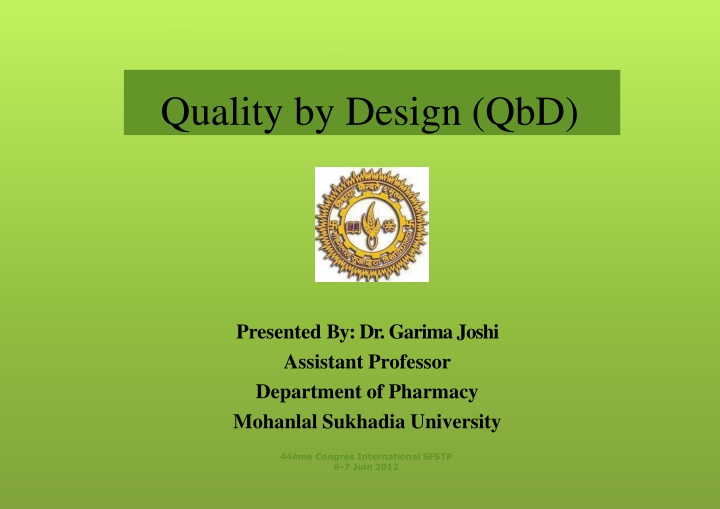

![[PDF⚡READ❤ONLINE] Black Hole Astrophysics: The Engine Paradigm (Springer Praxis](/thumb/21503/pdf-read-online-black-hole-astrophysics-the-engine-paradigm-springer-praxis.jpg)
